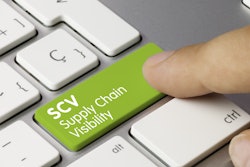
Market volatility and uncertainty brought about by the pandemic has led to organizations struggling to meet rising customer expectations for quick delivery, customization, low prices and sustainability due to inflexible networks and unstructured data. Organizations can no longer rely on traditional planning methods of planning to address supply chain challenges in response to these ongoing disruptions. Businesses have felt compelled to shift from monthly to weekly planning in response to rising levels of uncertainty. This is critical because the situation on the ground is rapidly changing as the virus spreads and the epicenter shifts.
Most of the time, however, demand planners are woefully unprepared to meet the demands of this new reality. Most businesses have a small team of demand planners, usually a 3- to 5-person team. To predict demand, most organizations employ methods such as casual demand forecasting, the moving average method and a few basic statistical models. If this small team is responsible for planning 3,000 SKUs for 20-30 distribution centers around the world, they cannot rely on traditional methods. Traditional approaches, on average, take 3-6 months to develop predictive analytics solutions. Nonetheless, their accuracy ranges from 25-45%. In today's volatile and highly competitive market, such long timelines and accuracy levels simply do not make sense.
While most businesses recognize the importance of supply chain agility, not everyone knows how to successfully implement it. If you are working to make our supply chains more agile, you must detect any changes in demand patterns as early as possible. Forecasting actual consumer demand, i.e. unconstrained demand rather than sales or invoices, is absolutely necessary. Average-based forecasts are insufficient, and granularity is required. Individual SKU forecasting at the granular level (distributor, retailer) with high accuracy on a daily/weekly/monthly basis will streamline supply chain operations.
Organizations should begin the journey of making their supply chains more responsive and proactive for an uncertain future by implementing agile demand sensing using artificial intelligence (AI) and machine learning (ML) technologies. Demand sensing enables businesses to forecast demand accurately based on real-time demand signals and information from various events. This will help organizations to prepare for and adapt to volatile times, as well as build a resilient supply chain.
The evolution of demand forecasting in a post-pandemic world
One of the major challenges that the traditional demand planning process faces is gathering insights from the massive amount of untapped data that exists in various pockets. Simply gathering and processing data consumes roughly half of a demand planner's time. Due to a large number of redundant tasks and the fact that multiple parties must align, the time it takes today for demand planners to generate forecasts and plans is inefficient. Forecasting and planning in a short period of time is extremely difficult due to the sheer number of SKUs, the various channels and the volatility of different markets. However, by making data-driven decisions, this process can be optimized to make the supply chain more responsive.
The rise of AI and ML technologies provides demand planners with incredibly powerful tools and insights, but demand planners will need to develop skills in understanding models. They should understand how to infer the ML model rather than how to build ML models. This skill set is required to make predictions, figure out why they are correct and effectively control supply and demand. Companies that take an AI-first approach can rapidly develop and deploy agile and accurate supply chain solutions for demand forecasting, built with technologies that can automate redundant tasks and the entire data journey. A 5% increase in forecast accuracy can improve the bottom line up to 1%, adding millions of dollars to the bottom line by focusing on data-driven planning.
The two main trends in forecasting that have largely benefited organizations to recover and thrive in the post-pandemic world are automation and scenario planning.
Automation
AI solutions can help eliminate large amounts of grunt work and help connect large amounts of data produced within an organization quickly and effectively. Automation can enable organizations to integrate their analytical models into the production environment for predictive analysis.
Bring in low-touch/no-touch demand planning powered by AI, which can help in setting up accurate demand sensing and shaping processes in all under 3 weeks and also helps you stay prepared with features such as scenario modelling and real-time collaboration, which can help in preparing for various scenarios in these testing times to keep your business optimized while helping you come up with plans accurate plans, fast.
As a result, this assists businesses in transitioning from a traditional to a sophisticated demand planning culture.
Scenario planning
It is critical to plan for multiple scenarios in order to reflect upon any uncertain situation that may come up. Planners can see how demand fluctuates for each SKU at each location based on historical data and various socioeconomic factors by simulating any possible what-if scenarios. The supply chains that remained stable during the lockdown relied heavily on scenario planning. This will be a key trend as we move into an uncertain future with volatile demand.
Implementing agile forecasting solutions
2020 saw an acceleration of digitization of various supply chain processes, but most companies fail to effectively implement AI, and demand planning teams end up reverting to more familiar and traditional forecasting methodologies.
The implementation process is riddled with lengthy, inconvenient decision-making processes, redundancies, complex workflow, poor KPI evaluation and missed opportunities as a result of the lengthy implementation process. Most supply chain planners must work with short planning horizons and generate forecasts based on input from multiple teams and sources.
This is why, when looking to implement AI-based demand forecasting solutions, businesses should do the following:
➔ Invest in solutions that are simple to integrate into the planning team's existing workflow.
➔ Invest in forecasting solutions that employ techniques such as scenario modeling. Scenario planning will prepare you for any market condition in uncertain times.
➔ Repetitive tasks should be automated. Look for scalable solutions that will eventually reduce redundancies on data scientists. This will enable the planning team to generate forecasts in a short period of time and shift their focus to demand shaping
The pandemic has shown that it is not enough for supply chains to be resilient; they must also be extremely agile and dynamic in order to serve customers even in the most adverse conditions. In today's digital age, there is a huge opportunity to transform demand forecasting with abundant data and cutting-edge technology that makes analytics accessible to many businesses. Businesses can reap the benefits of improved forecast accuracy by combining these technological advancements with a data-driven working culture. Even with marginal gains, businesses can drive revenue growth, provide better service by anticipating and shaping demand, reduce costs across the supply chain and reduce inventory waste.




















